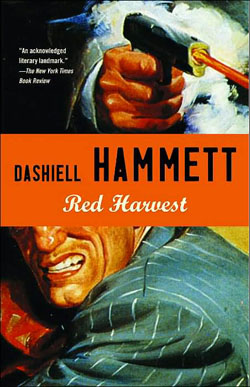 Why is it that I so seldom want to read what everyone else wants to read? A season’s blockbuster will come out—whether Hilary Mantel’s Wolf Hall or Stephen King’s 11/22/63—and the world will hurry off to the bookstores. More often than not, though, I dawdle, maybe stop for a coffee on the way. Sometimes I never get round to the book at all.
Why is it that I so seldom want to read what everyone else wants to read? A season’s blockbuster will come out—whether Hilary Mantel’s Wolf Hall or Stephen King’s 11/22/63—and the world will hurry off to the bookstores. More often than not, though, I dawdle, maybe stop for a coffee on the way. Sometimes I never get round to the book at all.
This isn’t to say that the annual prizewinners and best-sellers aren’t worth Mr. Bigshot Reader’s time or that I think I’m somehow superior to them. On the contrary. I fear that my decreasing interest in the contemporary indicates the onset of old age, or even old fogeyism. Soon I’ll start harrumphing when I open the morning paper.
Only partly to my dismay, I find that nowadays I gravitate increasingly to older books and particularly to tales of romance and derring-do from the late 19th and early 20th centuries, the period that the critic Roger Lancelyn Green dubbed “the age of the storytellers.”
Last year, for instance, I taught a course at the University of Maryland entitled “The Classic Adventure Novel: 1885-1915,” covering 10 books. Given those dates, you can probably guess half the titles on the reading list: H. Rider Haggard, King Solomon’s Mines; Robert Louis Stevenson, Kidnapped; H. G. Wells, The Time Machine; Baroness Orczy, The Scarlet Pimpernel; E. Nesbit, The Story of the Amulet; G. K. Chesterton, The Man Who Was Thursday; Rudyard Kipling, Kim; A. Conan Doyle, The Lost World; Edgar Rice Burroughs, Tarzan of the Apes; and John Buchan, The Thirty-Nine Steps.
If one were to characterize all these disparate works, one might settle for the phrase “comfort books.” Other descriptive clichés come to mind: ripping yarns, action-packed swashbucklers, escapist fantasies, boys’ books. All accurate designations, but I will make the case that such stories are as important to our imaginations as the more canonical classics.
To my delight, the class proved immensely popular. Students said that it reminded them of why they had majored in English: not because they could hardly wait to read the latest in literary theory, but because they loved stories. This spring the Maryland English Department invited me back to teach again. Did they want me to take over a graduate seminar devoted to Lydgate’s Fall of Princes? Lead a class through the complete critical works of Gayatri Spivak? Teach Provençal poetry? Not a bit. Instead of these worthy projects, I’m back discussing “The Modern Adventure Novel: 1917-1973.” Our reading list picks up where the previous one left off and includes: Edgar Rice Burroughs, A Princess of Mars; Rafael Sabatini, Captain Blood; Georgette Heyer, These Old Shades; Dashiell Hammett, Red Harvest; H .P. Lovecraft, At the Mountains of Madness; Eric Ambler, A Coffin for Dimitrios; Alfred Bester, The Stars My Destination; Chester Himes, The Real Cool Killers; Charles Portis, True Grit; and William Goldman, The Princess Bride.
Despite such plenty, I was chagrined that several titles I really wanted to use were out of print: Cornell Woolrich’s The Bride Wore Black, for instance, and Lionel Davidson’s The Rose of Tibet. What are publishers thinking? I could easily have doubled the number of books in both classes. And I still kick myself for forgetting about Kenneth Fearing’s The Big Clock.
On the other hand, I frequently find myself remembering the television newscaster and author Heywood Hale Broun. Bear with me a moment. Years ago, Broun would occasionally write for The Washington Post Book World. He was, I think, the only reviewer who hand-scribbled his pieces, using yellow sheets untimely ripped from pads of paper intended for schoolchildren. Sometimes his looping script was hard to decipher, but the reviews were invariably dryly witty and quite wonderful.
Broun, I remember from our conversations on the phone, loved old-style “Clubland” heroes, and collected Dornford Yates, E. Phillips Oppenheim, “Sapper,” Edgar Wallace, P. C. Wren, A. E. W. Mason, and John Buchan. He reveled in elegant 1920s mysteries set on the Riviera and tales of Graustark and Ruritania, enjoyed old-fashioned thrillers like The Four Feathers and Beau Geste and The Pirate Aeroplane (a favorite of the young Graham Greene), and made no secret that in a better world he would have been Richard Hannay.
Occasionally, Broun would summarize some particularly thrilling plot, and—Lord, forgive me—I would smile, in the superior way of youth, at the old man’s boyish enthusiasm. In those days, I much preferred work of the avant-garde to heroic exploits of Napoleon’s Old Guard. Had I but known, as the old novelists themselves used to write, what fate had in store for me. Today I’d give a lot to own Broun’s adventure library.
Fiction is a house with many stately mansions, but also one in which it is wise, at least sometimes, to swing from the chandeliers. At a dramatic moment in Sabatini’s piratical masterpiece, the evil buccaneer Levasseur snarls: “You do not take her while I live!” To which Captain Blood coolly replies, as his blade flashes in the sunlight: “Then I’ll take her when you’re dead.” Writing—or reading, for that matter—doesn’t get any better than that.

